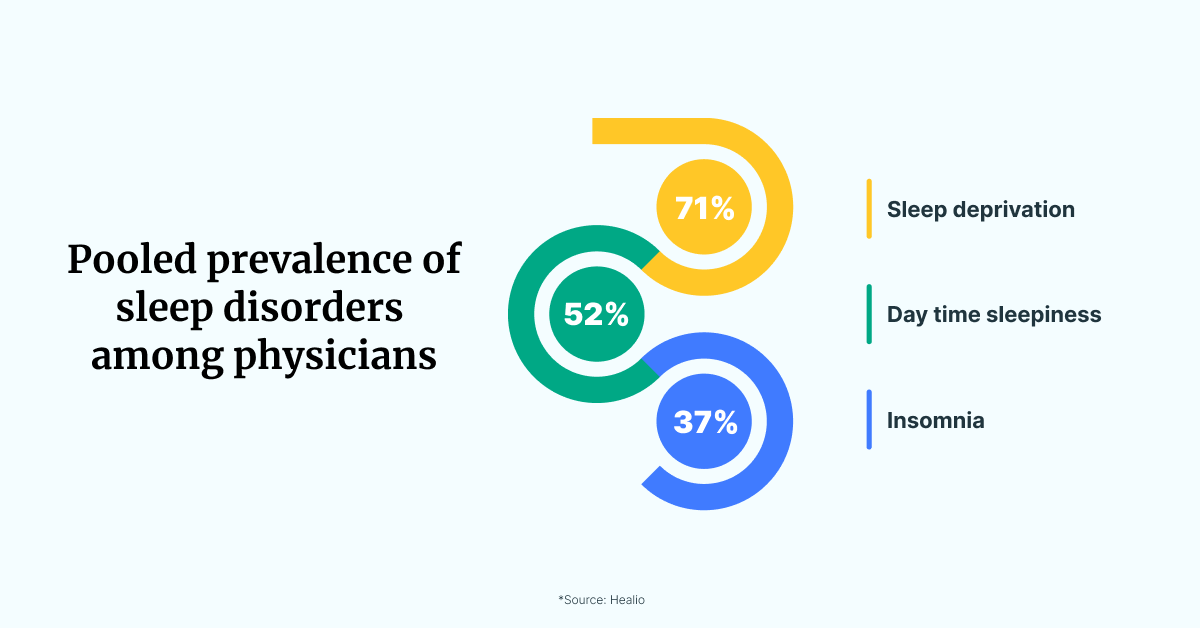Sleep Deprivation, Burned-out Clinicians & EHR Workflows
15 April, 2024 | 3 Min ReadRemember the curve we chatted about last time?
The one where your brain tosses out 60% of what you learned within hours?
Ahhhh!
Now you know why EHR users forget what they learned during onboarding training.
If you need a refresher on this, check out our last discussion here.
Now, let’s dive into what’s on the menu today.
We were working to deliver what we promised - best practices to ensure your EHR training sticks for your team.
And while doing our regular reading, we found something interesting.
We read these lines:
“When you learn something new, the best way to remember it is to sleep on it. That’s because sleeping helps strengthen memories you’ve formed throughout the day.”
And then this:
“Difficulty in remembering things is one of the common symptoms of sleep deprivation.”
Yeah, we all know sleep deprivation is a problem. But why are we talking about this right now? How is this relevant?
Stay with us; we are getting there. Who do you think is most sleep-deprived in your healthcare organization?
Burned-out physicians, most definitely. Here are some findings from Healio,

Now, these folks are the backbone of your organization, and guess where you’ve invested a ton of training resources?
Bingo – onboarding those very same docs!
So naturally, when you’re pondering on ensuring your team’s EHR training sticks, this is your starting line - easing your physicians’ EHR burden.
Now, what's causing their burnout? The complexity of EHRs could certainly be one of the reasons.
According to a 2022 KLAS Research, 33% of providers cited EHRs and other IT tools as a contributor to burnout, and 38% stated after-hours workload as a contributing factor.
Think about it: Your physicians spend their days (and nights) navigating through the intricacies of the EHR, often taking work home, sacrificing time with family, friends, hobbies, and essential rest (most importantly).
It’s time to step in and support them, don’t you think?
So, what can you do? Start by lightening their EHR load.
Completing tasks in the EHR workflow becomes easier when you know what to do. But you can’t remember everything all the time, can you?
Offer help in their moment of need, while they are stuck in their workflow. Trust me, that’s the best kind of help ever.
But hey, you can’t be everywhere at once, right? That’s where a Just-in-Time training tool swoops in to save the day. Imagine a tool (more like a Just-in-Time tool) that swoops in exactly when and where clinicians need it most i.e., when they are stuck with something in the workflow, sparing them the agony of bringing work home.
This works better than help desks and other means because it cuts down the waiting time and thereby brings down delays in task completion.
That’s amazing, isn’t it?
Now, we hear you asking about other tips to ensure your EHR training sticks for your team.
Don’t fret; we’ll spill the beans in the next issue. Didn’t want to overload you in one go.
P.S. If you want to know more about how to help with dealing with physician burnout, read this.
Check out PART 3: It has 6 tips to make EHR training stick for your users.
Craving for More Insights?
Subscribe now and lead the way in EHR training and support.